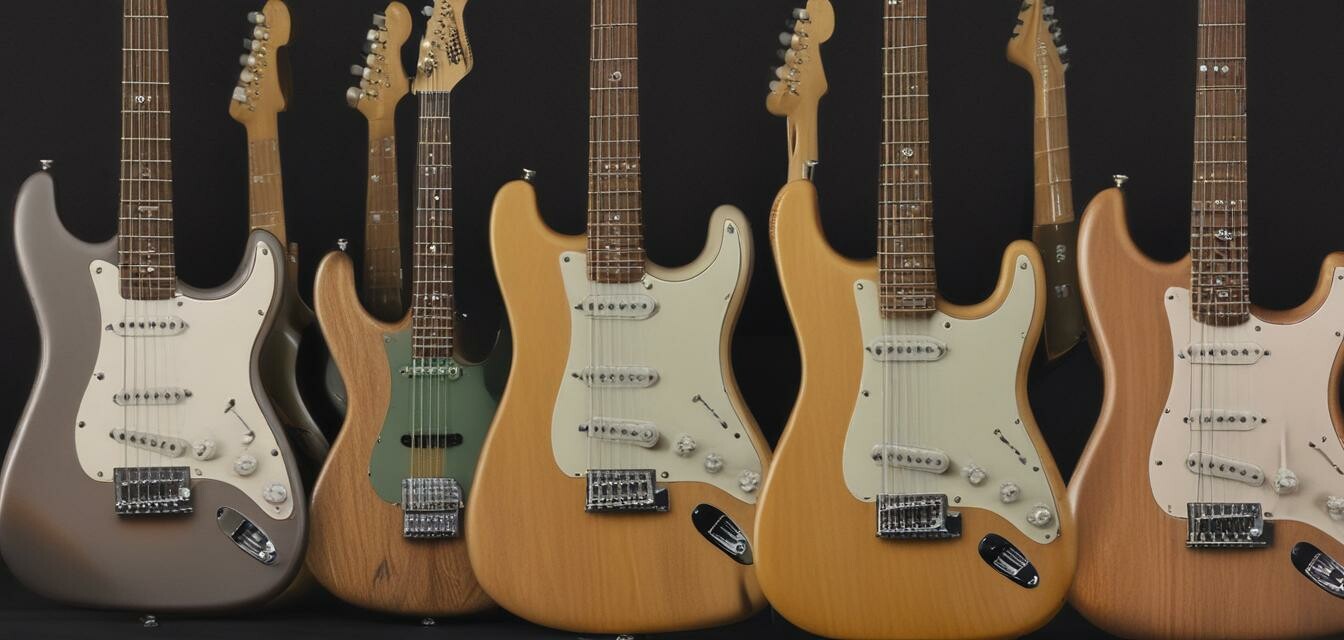
The Evolution of Fender Guitar Designs Over the Years
Key Takeaways
- Fender guitars have a rich history with significant design evolution influenced by music trends.
- Iconic models like the Stratocaster and Telecaster shaped popular music from the 1950s to today.
- Innovations in materials and technology have been crucial in enhancing sound and playability.
- The aesthetic aspects of Fender guitars reflect changes in culture and musical expression over decades.
- Keeping up with trends can help musicians select a guitar that suits their style and sound preferences.
Fender guitars have been at the forefront of musical innovation for decades, captivating the hearts of musicians and collectors alike. This article delves into the fascinating evolution of Fender guitar designs, exploring how they have changed over the decades. From their inception in the 1950s to contemporary styles, we will highlight key models and innovations that have significantly shaped Fender's history and its impact on music.
The Origins: 1940s - 1950s
Fender was founded in the early 1940s and quickly gained recognition for its electric guitars. The release of the Telecaster in 1951 marked a pioneering advancement in electric guitar design, offering a solid body that produced a bright, clear sound.
| Model | Year Introduced | Description |
|---|---|---|
| Fender Telecaster | 1951 | First commercially successful solid body electric guitar, known for its bright tone. |
| Fender Stratocaster | 1954 | Featured contoured body and three pickups, becoming iconic for rock music. |
The Golden Age: 1960s
The 1960s were transformative for Fender, both culturally and musically. The introduction of new color options and innovative pickup designs allowed for a deeper personalization of guitars. Artists like Jimi Hendrix and Eric Clapton helped solidify the Stratocaster's status as a rock staple during this decade.
Color Choices and Customization
Fender began offering custom colors and finishes, leading to a creative explosion in their designs. Some popular hues introduced included:
- Surf Green
- Fiesta Red
- Lake Placid Blue
Pros
- Wide variety of designs and colors for personal expression.
- Rich legacy in popular music and culture.
- High-quality craftsmanship.
Cons
- Pricing can be high for vintage models.
- Heavy competition with other brands.
Innovations: 1970s - 1980s
The 1970s brought significant technological advancements. Fender experimented with different materials and components, leading to improved sound quality and playability. The invention of the locking tremolo system and advancements in pickup technology enhanced the guitar's capabilities.
Notable Models
| Model | Notable Features |
|---|---|
| Fender Jazzmaster | Offset body shape with unique pickup switching, favored by surf rockers. |
| Fender Mustang | Shorter scale length, ideal for beginners and alternative music. |
Modern Advances: 1990s - Present
As music technology has evolved, so have Fender guitar designs. The introduction of the American Series and the Deluxe line features improved ergonomic designs and higher-quality materials. The materials used often include a mix of traditional woods and modern synthetic options to improve durability and sound.
Response to Contemporary Trends
With the resurgence of vintage aesthetics and a new generation of guitarists, Fender has reissued several classic models while incorporating modern features:
- Retrofitted vintage models with contemporary playability.
- Introduction of humbucker pickups and coil-splitting options.
- Expansion of signature artist models to cater to personal tastes.
Looking Ahead: The Future of Fender Guitars
As we approach 2025, the future of Fender guitars looks promising with a focus on sustainability, customizability, and digital integration. The rise of electric guitar influencers and streaming performances continues to drive interest in new designs and features.
Sustainability Initiatives
Fender is addressing environmental concerns by sourcing sustainable materials. This focus aligns with growing consumer demand for eco-friendly products, ensuring that the legacy of Fender guitars is preserved for future generations.
Tips for Choosing the Right Fender Guitar
- Consider your playing style and genre.
- Test different models to find the right fit and feel.
- Explore color and customization options that reflect your personality.
- Stay informed about new releases and innovations in the Fender lineup.
Conclusion
The evolution of Fender guitar designs over the years showcases the brand's ability to adapt and innovate in an ever-changing musical landscape. Understanding these trends helps musicians choose guitars that not only resonate with their playing style but also reflect current aesthetics. As Fender continues to push the boundaries, they maintain their esteemed place in the guitar community.
For more insights into Fender guitars and their rich history, don't miss our Buying Guides or keep up with the latest trends in the community!